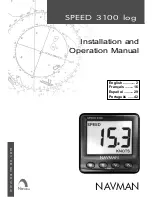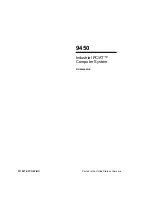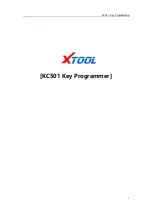
Safety
QC620
Skid Digger
Safety
10
•
Have an assistant on site to help you stay aware of
situations that may be dangerous. Have the assistant stay
in the designated safe zone, wearing bright, reflective
clothing.
•
Inspect and secure all guards before starting.
•
Before exiting the equipment, always lower the bucket to
the ground and engage the parking brake.
•
Operate the equipment at a speed that allows you maintain
control at all times. Drive slowly over rough terrain and
avoid obstacles.
•
Use extreme caution on inclines and edges where the
ground could give way.
•
Do not try to turn on a steep slope as this could result in a
roll-over.
•
Face the equipment when getting on and off. Maintain
3-point contact with steps and handrails.
•
Never operate this machine under the influence of alcohol
or drugs. Consult your doctor about using this machine
while taking prescription medications.
•
Position the skid digger so that loads extend directly in front
of the machine when lifting or placing heavy objects.
•
Do not walk or work under a raised attachment unless it is
securely blocked or held in position. Do not depend on the
hydraulic system to hold the load.
•
Skid steer wheels must be resting on the ground during
operation. Working with the wheels raised off the ground
could result in serious injury or death and may cause
damage to the machine.
2.9 Maintenance Safety
•
Good maintenance is your responsibility. Poor maintenance
is an invitation to trouble.
•
Read and understand all the information in the Safety
section that starts on
•
Follow good shop practices that include, but are not limited
to the following:
-
Keep the service area clean and dry.
-
Ground electrical outlets and tools correctly.
-
Make sure that there is an adequate amount of light for
the current task.
•
Never operate the tractor in a closed building. The exhaust
fumes may cause asphyxiation.
•
Never work underneath equipment unless it is securely
supported by blocks.
•
Always wear the appropriate PPE.
•
When replacement parts are required, only use genuine
original equipment manufacturer (OEM) parts. Wallenstein
cannot be held responsible for damage or injuries that are
caused by use of unapproved parts or accessories.
•
Inspect and tighten all bolts, nuts, and screws.
•
Reinstall all safety shields and covers after completing
service or maintenance.
•
Use regular cleaners to clean parts. Do not use gasoline.
•
Always use the correct tools for the task, make sure that
the tools are in good condition, and understand how to use
them.
2.9.1 Hydraulic System Safety
•
Make sure that all the components in the hydraulic system
are kept clean and in good condition.
•
Make sure all components are tight, and that lines, hoses
and couplings are not damaged before applying pressure to
the system.
•
Do not use your hand to check for
hydraulic oil leaks. Hydraulic fluid
escaping under pressure can penetrate
the skin causing serious injury. Use a
piece of cardboard instead.
•
Wear proper hand and eye protection
when searching for a high-pressure
hydraulic leak.
•
Seek medical attention immediately if injured by a
concentrated high-pressure stream of hydraulic fluid.
Serious infection or toxic reaction can develop from
hydraulic fluid piercing the skin surface.
•
Do not attempt any makeshift repairs to the hydraulic lines,
fittings, or hoses by using tape, clamps, or cements. Doing
so can cause sudden failure and create a hazardous and
unsafe condition.
•
Relieve pressure on the hydraulic system before working
it. The hydraulic system operates under extremely high
pressure.
•
Replace any hydraulic hose immediately that shows signs
of swelling, wear, leaks, or damage before it bursts.
•
Do not bend or strike high-pressure lines, tubes or hoses,
or reinstall them in a bent or damaged condition.
•
Check to make sure hydraulic hoses are not worn or
damaged and are routed to avoid chafing.
•
Never adjust a pressure relief valve or other pressure-
limiting device to a higher pressure than specified.











































